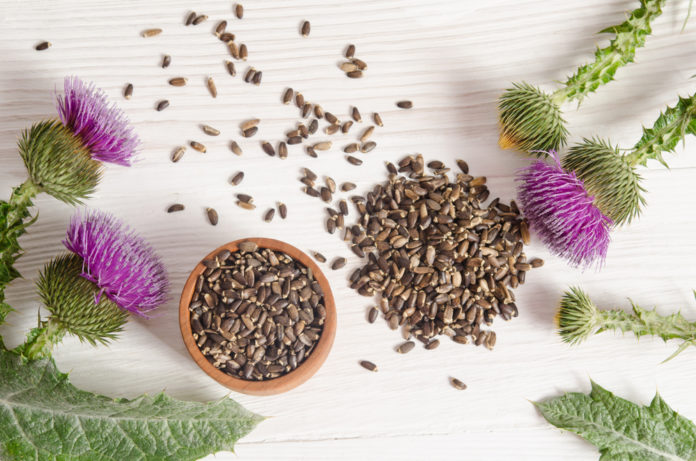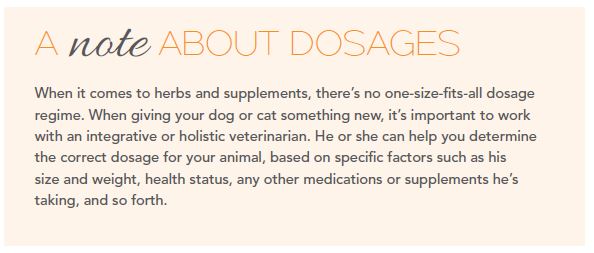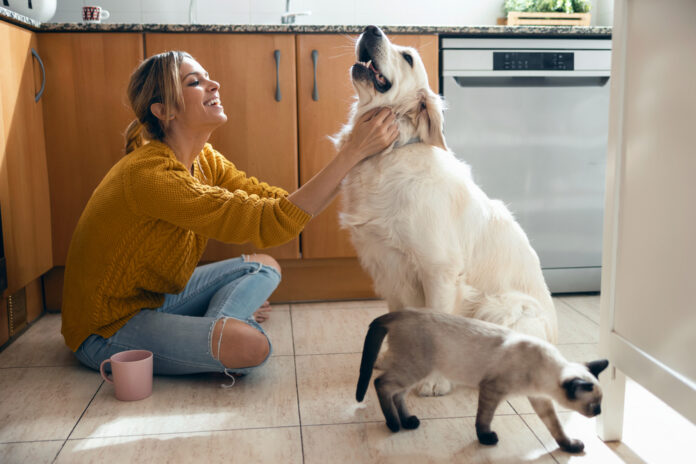Natural support for your dog or cat’s aging liver

The liver is one of the body’s hardest-working organs, so it’s not surprising that it needs some extra help as your dog or cat ages. Find out how to support this organ using natural therapies.
The liver is the largest internal organ in your dog or cat’s body, which gives you an idea of how important it is. It contains dozens of enzymes that create hormones and important proteins. Some of the most important include blood-clotting factors; proteins that carry nutrients such as vitamins and minerals; albumin, which helps with fluid balance; and glutathione, the most important antioxidant in the body. The liver is the main site for processing the body’s garbage, which includes hormones that are no longer needed, excess protein, and breakdown products from dead cells. The same process is used to get rid of toxins. As you can see, the liver plays an extremely important role in your dog or cat’s health, and as he ages, it needs some additionally help to continue functioning optimally. In this article, we’ll look at some natural therapies for supporting your dog or cat’s liver as he gets older.
3 ways you can support your animal’s liver
1. Protect – to help minimize damage from anything toxic
- Milk thistle, or its most active component, silymarin, is the absolute number one liver protector. It can protect against some very potent poisons, as well as help the liver heal when it has been damaged.
- Curcumin is an antioxidant that offers anti-inflammatory action for many parts of the body, and can help protect the liver. Two other herbs with milder liver benefits are dandelion root and artichoke leaf.
- N-Acetyl Cysteine, or NAC, is an antioxidant that the liver turns into glutathione. It helps replenish the glutathione in your dog or cat’s body, and decrease the low-level inflammation that is slowing down his liver. While it is possible to just give your animal glutathione, his body breaks it down so quickly that it doesn’t work very well. NAC stays in the body longer, and will speed up the whole process of glutathione creation. NAC is also a co-factor – more on these below.
- Other antioxidants that are useful for protecting the liver are alpha lipoic acid, vitamin C (with bioflavonoids), and vitamin E (d-alpha, not dl-alpha). Vitamin C also cycles vitamin E from its pro-inflammatory form back to its anti-inflammatory form.
 2. Co-factors — to make sure the organ can perform at its best
2. Co-factors — to make sure the organ can perform at its best
Co-factors are needed for two reasons. First, enzymes need them in order to work properly, and secondly co-factors are used in Step 2 of the detox process (see sidebar below). Enough co-factors ensure the reactive chemicals from Step 1 immediately react with them and are transformed into the less harmful chemicals in Step 2.
B vitamins are important co-factors. Try to find a B complex with natural rather than artificial forms of these vitamins. That way, your dog or cat’s body will not have to use extra time and energy converting the artificial form into the natural.

The most important B vitamins are:
- B3 (niacin)
- B5 (pantothenic acid)
- B6 (pyridoxal-5-phosphate not pyridoxine)
- B9 (methyltetrafolate, not folic acid)
- B12 (methylcobalamin not cyanocobalamin)
- Choline
- Inositol
Finally, everything the liver needs to function is already in a healthy liver. So if you include a small piece of liver in your dog or cat’s diet, you will be adding in a few co-factors. Just keep in mind that you are doing this to help his liver, and not as a major source of calories, so you only need a small piece. For cats, that is equal to about one ½” square per day. Cats can literally get addicted to liver. A diet of mostly liver can create vitamin A poisoning, so if you’re adding it to your cat’s diet, make sure to mix it in well with his food so he doesn’t go on a hunger strike and demand liver only.
3. Detoxification — to help eliminate any toxins that might have been stored in the body
If your dog or cat has a liver that has been affected by too many toxins — as most older animals do — then any detox procedure should be very mild. Otherwise, you risk damaging the liver further, since part of the detox process involves pulling toxins out of all parts of the body and back into the bloodstream. If this happens too quickly, as when complete fasting is used as a detox procedure, an older liver can become overwhelmed. This is especially true for senior overweight cats, in whom fasting can create enough liver inflammation to damage the organ in as few as 24 hours.
The aim of detoxification is to eliminate toxins from the body. This can be done by making the liver enzymes work better. Adding the antioxidants and cofactors we just discussed can help with this. So can sulforaphane, an important chemical from the broccoli family, or the whole broccoli family itself (e.g. broccoli, broccoli sprouts, cauliflower, Brussels sprouts, collard greens, kale and cabbage). You can add a little sulforaphane to your companion’s diet in the form of these veggies, whether fresh, in their dried form, or as a powder.
You can also reduce the garbage your animal’s liver has to process, so it has more room to process toxins, via a very short-term partial fast. Your companion should already be taking liver protectants (especially milk thistle), antioxidants and co-factors. For one day, feed him half as much food as you normally do, and replace the other half with an equal quantity of an easily-digested carbohydrate, such as white potato. If possible, add some fat-free chicken broth to make it slightly soupy, in order to increase liquid intake. You can also encourage your dog or cat to drink more chicken broth during the day (although felines may not agree with this idea).
After following these steps, your cat or dog might show more energy; and if a blood test is done, is may show a decrease in high liver enzymes. Or you may not see any clear changes – but rest assured his liver is thanking you.




